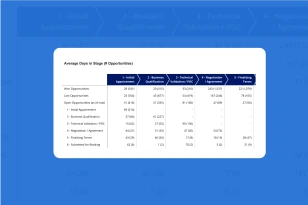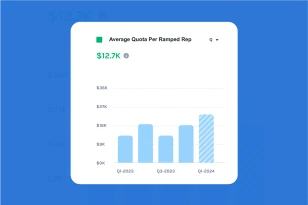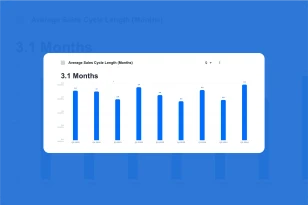What is Sales CAC?
Sales Customer Acquisition Cost (Sales CAC) measures the cost incurred by the sales team to acquire a new customer. It quantifies the expenses associated with acquiring each customer, encompassing costs such as marketing campaigns, advertising, sales team salaries, and related expenses.
Why is Sales CAC important?
Sales CAC is important for a few reasons:
- Financial Efficiency: It helps assess the efficiency of your sales and marketing operations. Knowing the cost to acquire a customer is essential for budgeting and maintaining a healthy profit margin.
- Sustainability: Understanding Sales CAC ensures that your customer acquisition efforts are sustainable. High CAC compared to customer lifetime value can be unsustainable in the long term.
- Investor Confidence: Investors often scrutinize Sales CAC to gauge the financial health and growth potential of a SaaS company. A lower CAC relative to customer value is viewed favorably.
- Strategic Decision-Making: This metric informs strategic decisions about resource allocation and marketing channels. It helps identify which channels or campaigns are cost-effective for customer acquisition.
How do you calculate Sales CAC?
Below is the formula for Sales CAC:
Sales CAC Formula
(Sales Expenses Lagged * New Logo CAC Sales Allocation) / New Customers Acquired(#)
How do you improve Sales CAC?
Improving Sales CAC involves strategic efforts to acquire customers more cost-effectively and efficiently. Here are some approaches to enhance this metric:
- Targeted Marketing: Focus on precise and data-driven marketing strategies that reach the most relevant audience, reducing wasteful spending on uninterested prospects.
- Conversion Rate Optimization: Improve the conversion rate at different stages of the sales funnel. This involves refining your messaging, website, and sales process to convert more leads into paying customers.
- Customer Retention: Invest in customer retention strategies to maximize the lifetime value of existing customers. A higher customer lifetime value can help offset acquisition costs.
- Testing and Analytics: Continuously test different marketing channels and campaigns to identify which ones yield the best results in terms of customer acquisition cost. Data analytics can provide insights for optimization.
- Referral Programs: Encourage satisfied customers to refer new customers. Referral programs can be a cost-effective way to acquire new customers.
- Sales Team Efficiency: Ensure your sales team is well-trained and equipped to close deals efficiently. Improve their skills, reduce sales cycle times, and set clear targets.
- Cost Reduction: Explore ways to reduce acquisition costs without compromising quality. Negotiate better advertising rates, automate marketing processes, and consider outsourcing non-core functions.
- Customer Segmentation: Segment your customer base to better understand the most profitable customer segments. Tailor your marketing and sales efforts to attract customers who are likely to have a higher lifetime value.





